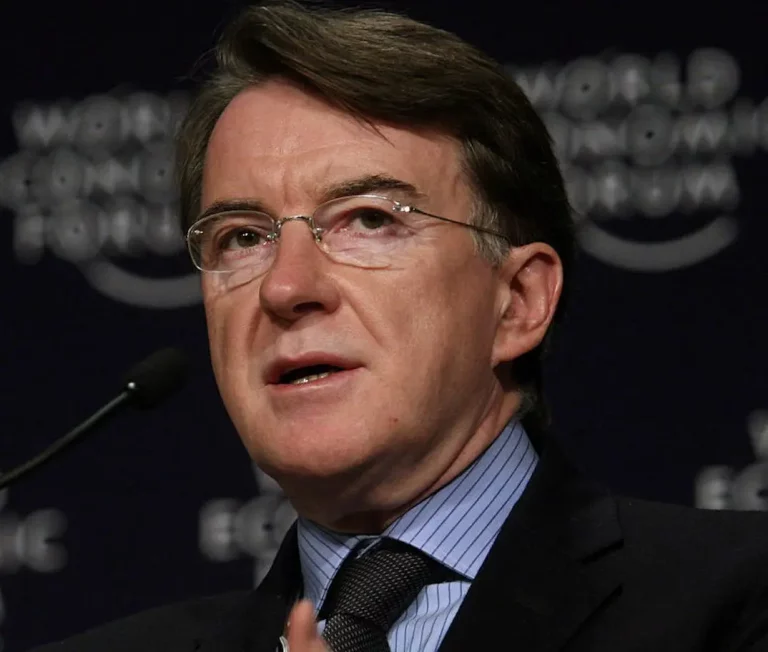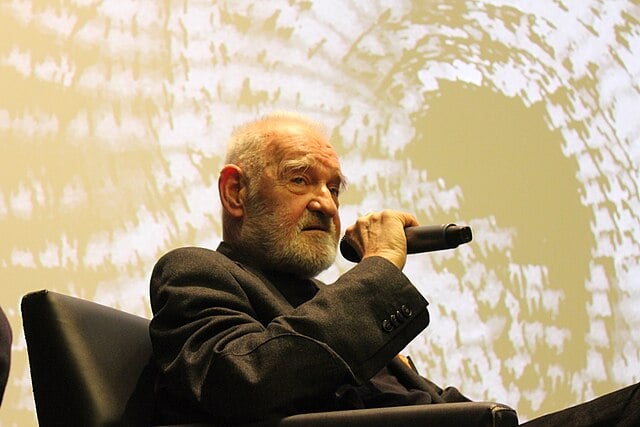“So, do you think it’s really a cult?”
This question was met with nods of assent among the group I was sitting with, as we sipped our coffees on the 2nd floor of a Berlin conference centre. It had been barely a month since I was introduced to the movement known as Effective Altruism (EA). Thousands of dollars of crypto money later, I was chatting with Oxford finalists, civil servants, and researchers – most of whom cheerfully admitted that there was a quasi-religious fanaticism about the organisation that was hosting us. I was barely seventeen at the time.
I’ll slow down. Effective Altruism defines itself as “an intellectual project, using evidence and reason to figure out how to benefit others as much as possible.” It then seeks to take action on this basis to build a “radically better world”. Its adherents, EAs, endorse the guiding principles of a utilitarian commitment to others, openness (including to potentially strange or neglected ideas), a scientific mindset, a collaborative spirit, and integrity. And yet unfortunately on this last point, I’m willing to bet that if you’d heard of Effective Altruism coming into this article, it was quite possibly because of convicted crypto fraudster and former EA donor Sam Bankman-Fried who has now been sentenced to 25 years in prison.
In 2022, I participated in the Leaf programme. This was an all-inclusive 10-day summer school hosted at Lady Margaret Hall. Its goal was to direct some young minds towards a career that would produce the most good and so help alleviate suffering. Effective Altruism, through Leaf, spent a large amount of money – over £2,000 per participant – to target promising future Oxbridge students. We were lavished with job advice, a free residential in Oxford, restaurant meals each night, outings to escape rooms, evenings at bowling alleys, and the like. In exchange, we attended sessions on prioritising causes, identifying neglected suffering, and planning our impactful careers. We chose between helping agonised farm animals and stopping the creation of potent bioweapons. We weighed up whether a malign artificial intelligence and the “lock in” of techno-dictatorship was the biggest threat of all.
We had been chosen, it was rumoured, out of a highly competitive pool of potential future decision-makers. The cost of gathering us in Oxford in this way was outweighed by our potential to do good in our lives. If even one of us could do something really impactful, it would all be worth it. Leaf knew we were probably going to Oxbridge and it knew that this was something that could be leveraged. Indeed, its website now uses this foresight as an advertising tool. We are the alumni – the website proudly declares alongside our glossy photographs – who are now at LSE, Harvard, Oxford, Cambridge. I’m even in their promotional video. This might seem fairly standard among private schools and for-profit application academies. But Leaf was different. I was struck by the overriding ambition of the project: an earnest, secular dedication to producing the most good.
This kind of talk – like the phrase “producing the most good” – will start to sound quite familiar to philosophy students. Effective Altruism, after all, is just a movement that seeks to apply utilitarianism to one’s career choices. The greatest happiness and the least suffering – whoever feels it, and crucially whenever they feel it. When we arrived at Leaf – not yet inducted into EA’s manner of consequentialist, calculating ratiocination – we were struck by the unintuitive conclusions we were at times led to. I don’t believe we were all convinced that we ought to deprioritise global poverty and climate change over ‘x risks’ – potential extinction events such as an asteroid strike, AI overlord, or nuclear winter that could irreversibly curtail humanity’s happiness. Yet this was exactly the direction in which discussion was headed.
One graduate from Leaf’s comments to Cherwell about their experiences highlight the mental training required to adopt an Effective Altruist mindset. “I feel I ultimately came away from Leaf thinking that the EA approach is far too numerical and lacks the human empathy needed to solve the world’s most pressing problems.” Required reading prior to the programme included Julia Galef’s acclaimed book The Scout Mindset, which seeks to encourage people to objectively survey the intellectual terrain as “scouts” rather than ferociously defend a pre-existing point of view as “soldiers”. Yet this does not – or ought not – to extend to a sense – even if only among some within the Leaf cohort – that human empathy was sidelined. We were 17 year olds, assessing problems whose magnitude many would spend their whole lives unable to comprehend, in one hour sessions and group presentations.
Yet we learnt the terminology, the rules of the game. Part of the reason I believe people compare EA’s internal architecture to that of a cult of sorts is because it comes with its own metalanguage and distinct way of making decisions. Cause prioritisation, diminishing marginal utility, expected value: this logic is useful (I may even say vital) in working out where charity money should go. It always boils down to how much suffering can be avoided, and how quickly and cheaply. Give money to fund malaria nets, not expand the donkey sanctuary. But where EA took all this further was by inviting it into our conception of what would make our lives worthwhile. Dedicate all your efforts to tackling the biggest problems, leave everything else behind.
Where this had the potential to go astray was when the pursuit of reducing suffering led to an attitude in which the end justified the means. At Leaf, we were shown promotional videos of Sam Bankman-Fried that presented him as nothing short of a saint. We found his “earning to give” strategy – work in finance to earn as much as possible, then donate it all to charity – blindingly shortsighted. It made no mention of the unsustainable future of cryptocurrencies. Nor of the fact that getting rich quick in the Global North may be reinforcing a highly unequal political system that most ethics – including utilitarianism – will usually condemn. That Bankman-Fried still had pennies left over for a villa in the Bahamas didn’t help convince us either. I think this – one of our first interactions with the movement – would now be acknowledged as a mistake.
Furthermore, EA stunned us with its political neutrality. It was as though we just needed to apply a logical, centrist/social democratic algorithm and our problems would disappear. In some ways, this is very convincing. I do believe that politics neglects issues that lead to a large amount of suffering, not least that of animals in factory farms. Short electoral cycles mean that we never look to the longer term. The problem many people had here, however, was in practice, not principle. By assuming that problems could be magicked away by a sufficient amount of money, I recall a Leaf friend insisting to me, no questions were asked of the systems that produced these problems in the first place. Perhaps in contrast to most centre-left cultural movements, discussions of colonialism, gender, and class were not the order of the day. They made way for galling talk of species, weapons, and robots.
The political blindness of EA’s cool-headed utilitarianism may ring some alarm bells when we look at adjacent movements and offshoots. Amongst these is pronatalism, a practice among some Effective Altruist couples to have as many children as possible, doing their bit to avert ageing populations and a subsequent demographic collapse. The most fervent pronatalists are allies of Elon Musk and JD Vance. Others may oppose birth control, and resort to parenting practices that are tantamount to abuse. The overwhelming negative utility of adopting such a Gileadean setup seems to be ignored in the race for more people. More people, more potential for maximised pleasure.
Another, far more influential strand, is that of longtermism. It’s the view that taking steps now to affect the distant future is a moral priority. This is because future people, due to their sheer number, are at least as (and probably more) important than people alive today. If you think 8 billion can suffer now, just wait till you see the trillions deprived of existence should an extinction event come to pass. Many find that this kind of ‘strong’ longtermism – distinct from general concern regarding the environmental legacy left to our children and grand-children – could pose some pretty serious risks for individual liberty, democracy, and people living in poverty today.
Yet this is not a philosophy article: I’d refer you to my half-baked 1am tutorial essays for that. So I won’t say any more on pronatalism or longtermism. The examples serve to demonstrate that Effective Altruism requires some significant moral courage, and a willingness to endorse ideas that many would term controversial, to say the least. Returning to my original anecdote, you can imagine my shock that these ‘edgy’ ideas were not only endorsed by Oxford students – the people my 16 year old self aspired to be – but also by alumni in walks of life as varied as business, tech, the NGO sector, and government. And they all were happy to consider – and perhaps agree – that the vehicle behind all of this may well be quite odd, and actually – some would have it – a cult where basic principles could not be questioned.
Perhaps this comes most clearly to the fore in the supposed ‘cause area’ of ‘community building’. Considered on a similar scale of importance to addressing global risks, it refers to growing the Effective Altruism community with chapters and cause area groups in cities and university campuses across the world. According to the EA website 80,000 Hours, “We think work on building effective altruism has the potential for a very large positive impact. It seems plausible that the effective altruism community could eventually save 100–1,000 million quality-adjusted life years (QALYs) per year by causing $10–100 billion per year to be spent on much more effective projects. As an alternative measure, it seems plausible that the effective altruism community could do good equivalent to reducing the risk of human extinction by between 1% and 10%. These estimates are extremely rough and uncertain.”
In other words, Effective Altruism believes, or even knows (although through “rough and uncertain estimates”) that it is potentially an extremely significant force on the survival or extinction of humanity. Defined like this, it seems unsurprising that zealous expansion of the organisation’s inner functions would be seen as a priority. Maybe it’s here that things go off track. A Leaf alumnus told me: “[t]he core concept of EA is a noble one, but as an organisation it has become far too preoccupied with expanding its membership, rather than actually seeking to help the most people.” The fear, it seems, is that a movement that began to try and address global poverty more effectively becomes far too self-absorbed.
Effective Altruism, since it did have some very rich donors, had lots of money to spend in 2022. It was their (likely honest) generosity in trying to help people come together to do good that was arguably exploited by others. I noticed this on a personal level too. Leaf taught us how to be EAs, yet I fear that too many of my zealous new co-converts actually had their eyes on essay prizes (which could run into thousands of pounds of spending money) and fully-funded trips to European capitals.
In their urge to get the best people closer to the levers of power in order to do good, Effective Altruism had accidentally allowed itself, in some cases, to be exploited by Oxbridge-bound careerists and free-riders who did not care about the question of if a pea plant could suffer, and were not planning on giving their performance bonus to charity. At a personal level, this is my worry when I wonder how many of my fellow Leaf alumni have internalised what I consider to be one of the most positive upshots of the whole thing: a desire to help others and not just be a useless corporate spreadsheet-filler.
In boasting of its Oxbridge alumni, Leaf may have simply come to reflect the normal career destinations of most Oxbridge students, which typically do not include selfless donations of the majority of one’s wages to charity nor life as an animal rights charity entrepreneur. Instead, my experience was in many ways a portent of my life at St John’s College, with its free or highly subsidised trips, the sense of self-importance it gives its students, the idyllic setting, and perhaps most interestingly, the sense that I was mixing with people from a new social milieu.
I remember arriving at Leaf and realising that several participants already seemed to know each other: they had gone to the same group of aspirational, LinkedIn-able grammar schools. Leaf alumni now are thriving across Oxbridge: they achieve high grades, study a range of subjects, and help lead student societies like the Oxford Union, Cherwell, and [Cambridge student newspaper] Varsity.
The experiences of Leaf brought benefits for the students present who had not necessarily been destined for such a schooling and career trajectory. “Leaf was the first time I had been exposed to the Oxbridge style of learning, both in the sessions and with the other participants. The intense debates about how best to do good have stuck with me, and continued to influence my thinking about how to do good with my career.”, a working class alumnus tells me.
This article has discussed numerous criticisms of Effective Altruism. However, it is undeniable that it has also influenced me very profoundly. While I am no longer formally involved in any way, it is still a priority of mine to have a career that has a positive impact. At the very least I don’t want to ‘sell out’ and contribute to a negative system, all just to earn money that I don’t really need. I stop short at quantifying to exactitude the sector in which I must work. Broadly speaking, EA may have done its job for me. However, I fear that for too many of Leaf’s alumni, this was just a stepping stone towards other things. The moral lesson was never truly internalised.
This being said, there is evidence that some Leaf alumni have been directed towards meaningful, moral careers. Jamie Harris, Director of Leaf, when approached by Cherwell for comment, remarked: “Leaf often reminds me of many young people’s vast potential to help others. We have Leaf alumni still at school researching ambitious questions like how they can improve government decision-making, taking actions that directly make a difference like fundraising for cost-effective charities to help people in poverty, and continuing to explore how they can best help others over the course of their career.”
Since Leaf, I have been vegetarian on the basis of trying to fight industrial factory farming and its colossal toll on the billions of animals who suffer in the most atrocious conditions. I take non-human consciousnesses more seriously. I stress about the meaningfulness of my career far more than I probably would have. I met my girlfriend whom I have been with ever since. If I had not met Effective Altruism, it is unclear whether these things would have happened to me.
Effective Altruism has struggled to shake off negative media attention and nagging worries about its cult-like status. Yet perhaps in the world we live in, to attack movements that seek to demand a higher standard of altruism from us is to play a dangerous game. I still bump into Leaf alumni all around Oxford, and only time will tell whether EA’s attempt to change the futures of a generation of Oxbridge’s best and brightest will be successful.
EA Oxford were approached for comment.













